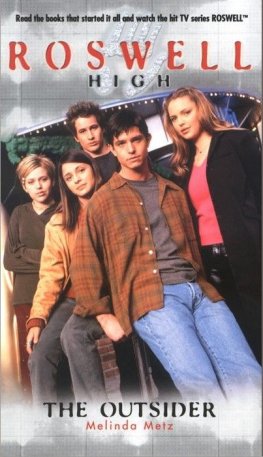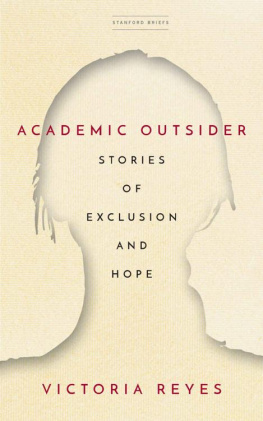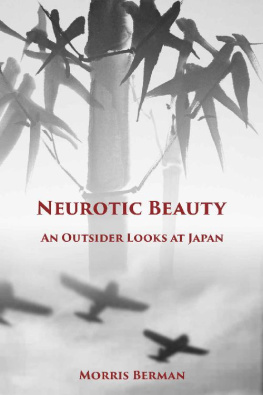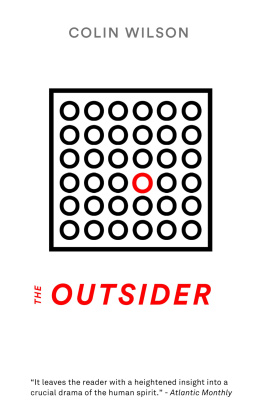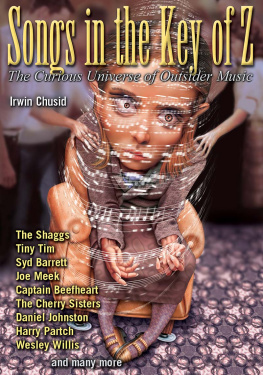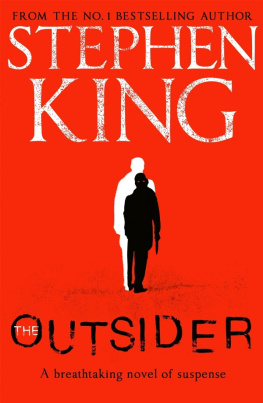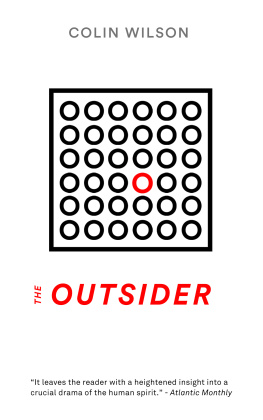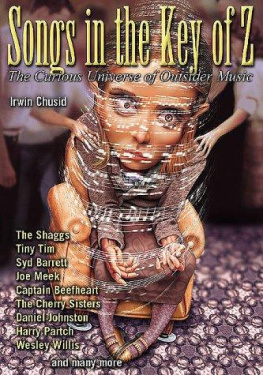Praise for Outsider Art: Visionary Worlds and Trauma
Lavishly illustrated, many of the images never before seen by the public, this indispensable volume is steeped in details about the lives of outsider and visionary artists. Authoritative, informative, and accessible, this groundbreaking volume is a work of art itself as well as a monumental achievement in scholarship, one that forces us to rethink conventional notions of art and creativity.
Michael Owen Jones, professor emeritus, Department of World Arts and Cultures, University of California, Los Angeles
By exploring personal histories and traumatic experiences of creative people sometimes living at the fringe of society, Daniel Wojcik brings new insights into the phenomenon of outsider art. This comprehensive study will influence how outsider art is now seen and evaluated; it blurs the boundaries between insiders and outsiders and contributes to our understanding of art today. Engagingly written and wonderfully illustratedin full color!this is an essential resource that takes the reader on a mesmerizing and inspiring journey. Where are my paint brushes...
Peter Jan Margry, professor of European ethnology, University of Amsterdam
Wojciks new book seems destined to become an essential text for understanding the field today. Outsider Art: Visionary Worlds and Trauma now brings a great deal of clarity and understanding not only to one of the major hotbeds of activity in the international art market, but to the creative act itself. It is a must-read for anyone serious about better understanding this fascinating subject.
Roger Manley, Director of the Gregg Museum of Art & Design at North Carolina State University and curator of exhibitions of self-taught art at more than forty other institutions, including the American Visionary Art Museum
Wojciks informed writingdemonstrated by an almost encyclopedic knowledge of self-taught and outsider art and historyhis original research, his balanced and nuanced thinking, the representative examples he discusses, and his ability to articulate his findings make this book required reading for anyone interested in outsider, self-taught, or contemporary folk art.
Carol Crown, professor emerita, University of Memphis, and coeditor of Sacred and Profane: Voice and Vision in Southern Self-Taught Art

OUTSIDER ART
Visionary Worlds and Trauma

Daniel Wojcik

www.upress.state.ms.us
The University Press of Mississippi is a member of the Association of American University Presses.
Cover image: Eugene Von Bruenchenhein, Untitled (no. 931), 1962. Oil on paperboard, 17 x 28 in. (44.4 x 72.4 cm). 2009 Rich Shapero. Used with permission. www.vonbruenchenhein.com
Copyright 2016 by University Press of Mississippi
All rights reserved
Printed by Regent Publishing Services in China
First printing 2016
Library of Congress Cataloging-in-Publication Data
Names: Wojcik, Daniel, author.
Title: Outsider art : visionary worlds and trauma / Daniel Wojcik.
Description: Jackson : University Press of Mississippi, 2016. | Includes
bibliographical references and index.
Identifiers: LCCN 2015045299 (print) | LCCN 2015045969 (ebook) | ISBN
9781496808066 (cloth : alk. paper) | ISBN 9781496808073 (Epub Single) |
ISBN 9781496808080 (Epub Inst.)
Subjects: LCSH: Outsider art. | Art brut. | Outsider artists-Psychology.
Classification: LCC N7432.5.A78 W65 2016 (print) | LCC N7432.5.A78 (ebook) |
DDC 709.04/09dc23
LC record available at http://lccn.loc.gov/2015045299
British Library Cataloging-in-Publication Data available
To the memory of my mother, Beatrice Ann Caponecchia (19302009)
And to Michael Owen Jones, mentor and pioneer in the study of vernacular artistic expression

Contents
Acknowledgments
Researching and writing this book has been a lengthy process, and I have many people to thank for their suggestions and support. The phenomenon of self-taught and outsider art has intrigued me for decades and although I have taught courses, visited exhibits and major venues internationally, and presented academic papers on the subject over the years, my ideas for this volume came together at the conference Taking the Road Less Traveled: Built Environments of Vernacular Artists, hosted by the John Michael Kohler Arts Center in Sheboygan, Wisconsin, in September, 2007. The presentations at that conference, and discussions with those in attendance, particularly Erika Doss, Jo Farb Hernndez, Sarah Lombardi, Valrie Rousseau, Charles Russell, Peter Tokofsky, and Daniel Franklin Ward were instrumental in helping me formulate my thoughts about self-taught artists and vernacular artistic expression for this book. I also thank Leslie Umberger and Terri Yoho for providing a wealth of information and access to the collections of the John Michael Kohler Arts Center and the Kohler Foundation during the conference and again during my other visits.
I am especially grateful to my former teachers at UCLA who encouraged this project from the start: Robert A. Georges, who expanded my understanding of expressive behavior, and Michael Owen Jones, who taught me how to study art making and provided valuable advice throughout my research. I also thank the following individuals who offered their help and insights during various stages of this project: Aarne Anton, Jim Arient, Thomas Atkins, Daniel Baumann, Eric Bebernitz, Doug Blandy, Henry Boxer, Shari Cavin, William A. Christian Jr., Donald Cosentino, Bruno Decharme, Ted Degener, Luisa Del Giudice, Carl Diehl, Craig Flanery, John Gage, Kristen Galleneaux Brooks, Nathan Georgitis, Henry Glassie, Marion Harris, Rebecca Hoffberger, Karen Hydendahl, John Maizels, Roger Manley, Jay Mechling, Randall Morris, Bob Moyers, Eliza Murphy, Tom Patterson, Leonard Norman Primiano, Kate Ristau, Stephen Romano, Thomas Rske, Rosalynn Rothstein, Jack Santino, Joseph Sciorra, Fred Scruton, Sharon Sherman, Frans Smolders, John F. Turner, Nico van der Endt, and Julie and Bruce Lee Webb. My sincere thanks as well to Carol Crown, Robert Dobler, David Ensminger, Robert Glenn Howard, Peter Jan Margry, Peter Tokofsky, and Ann Wiens for offering critical feedback on portions of this manuscript. I am indebted to Katie Keene, Todd Lape, Robert Jefferson Norrell, Anne Stascavage, Shane Gong Stewart, and the supportive staff at the University Press of Mississippi for their help with the publication process, and especially to Craig Gill for his encouragement, editorial advice, and good humor. Thanks as well to the students in my classes and the friends and colleagues who expressed interest in this project. I owe a special debt of gratitude to the Visionary Art Museum of Los Angeles, a project of Community Partners, which came to the rescue with unexpected support that enabled the inclusion of many of the color plates featured in this book. I also would like to acknowledge the late Seymour Rosen, photographer and art environment enthusiast, whose tireless efforts to document and preserve vernacular environments through his nonprofit organization SPACES helped to validate and inspire my early interest in the creativity of self-taught artists.
Next page

